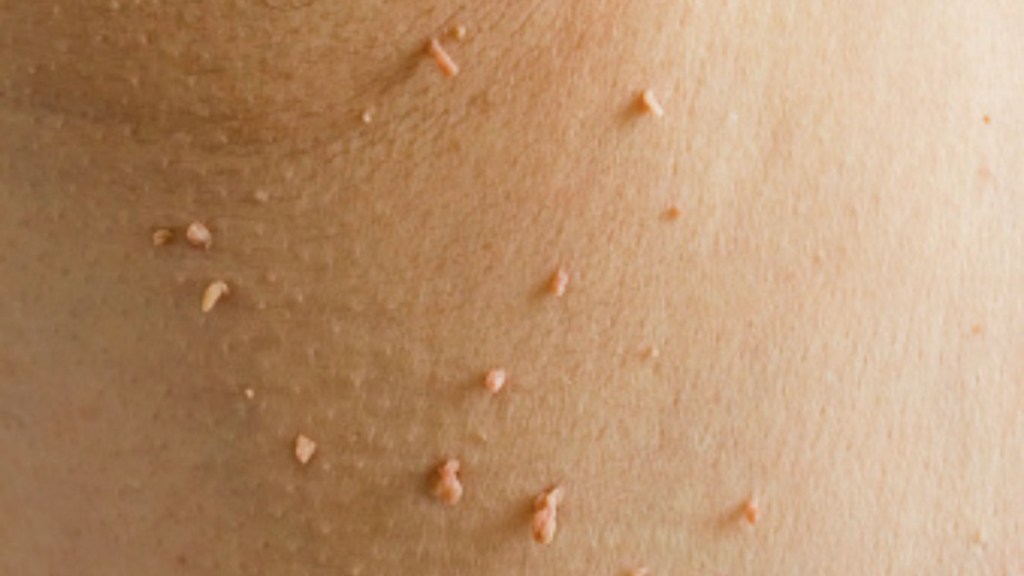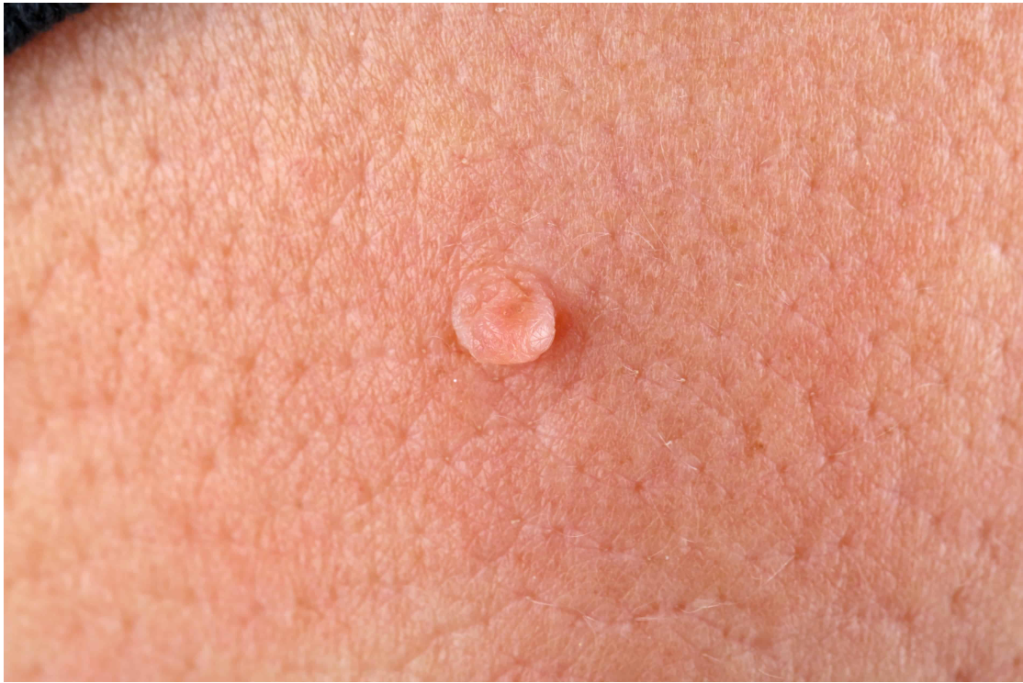Ob/Gyns on How to Tell If That Lump Is a Vaginal Skin Tag Or Something More Serious
What distinguishes a tag from a wart — and the 4 signs you should show it to your doctor

You’re in the shower when you suddenly notice a small, fleshy growth near your vagina. Yikes — where did that come from?! And is it something you need to worry about? Any time you find a new bump on your body, it can be unnerving. And yet — deep breath — often a fleshy bump is simply a vaginal skin tag, which is a harmless growth. But how can you tell if it’s harmless? And what causes a vaginal skin tag to develop? What’s the best way to get rid of it — and do you even need to? Here’s what the experts say:
What is a vaginal skin tag?
More than half of us will develop at least one skin tag, also known as acrochordon, in our lifetime. They can pop up anywhere on the body — yep, even ‘down there.’ And while anyone can get them (even teenagers!), the odds increase as we get older. The reasons for that are unclear, says Barbara DePree, MD, a certified menopause practitioner and founder of MiddlesexMD.com, an educational resource for women in perimenopause and beyond. These harmless growths often pop up in areas where the skin rubs together, like under the breasts, in the underarm area, in the groin or on the neck, she explains.

“Vaginal skin tags are small, soft, skin-colored growths that hang off the surface of the skin by a thin piece of tissue called a stalk,” explains says Anna Chacon, MD, a board-certified dermatologist at Miami Derm. Despite being called “vaginal skin tags,” these growths don’t actually develop inside the vagina. When you hear the term “vaginal skin tag,” it’s referring to a skin tag that develops near the vagina, such as on the vulva or inner thighs.
Vaginal skin tags are benign and harmless. However, certain conditions — like cancerous growths or genital warts — can be mistaken for skin tags, so it’s important to alert your doctor to any new growth on your skin.
What causes a vaginal skin tag to develop?
Skin tags are a bit of a medical mystery. Their exact cause is unknown, but experts do know that a few factors can increase the risk of developing a skin tag. “Skin tags can be caused by friction or irritation to areas commonly rubbed by clothing or underwear,” explains osteopathic physician Rhiannon Mayes, DO, an OB/GYN at Axia Women’s Health. “Aging of the skin can also result in skin tags. They can occur as a result of high blood sugar and insulin resistance, while other times they can develop without a clear reason.” And some people are more genetically predisposed to develop skin tags than others. Vaginal skin tags are not caused by an infection, and they’re not contagious.
How to tell what your mystery bump is a skin tag
If you notice a new growth near your vaginal area, genital warts may be the first thing that comes to mind. Genital warts are caused by human papillomavirus (HPV), which is the most common sexually transmitted infection in the U.S. (Click through to learn more about HPV in seniors.)
“Differentiating between skin tags and warts can be difficult, as both can appear as small growths on the skin,” Dr. Chacon says. But there are a few clues that can help you determine which one you’re most likely dealing with.
- Shape: “Unlike warts caused by HPV, skin tags typically grow on a thin stalk,” says board-certified dermatologist Andrei Gherghina DO, co-founder of Oceans Dermatology in Boynton Beach, FL. “They have a narrow base and a more bulbous soft outgrowth on the end.” Skin tags may also look like a deflated balloon or a tiny flap of skin, whereas genital warts tend to be flatter.
- Texture: “Genital skin tags often appear as soft, smooth, raised outgrowth areas of skin,” Dr. Mayes says. “Genital warts are typically flat, irregular or bumpy.”
- Number: “Unlike warts, skin tags are not contagious and they usually appear singularly rather than in clusters,” Dr. Chacon says.

Certain strains of HPV can dramatically increase your risk of developing cervical cancer and other types of cancer, so if you think your growth may be a wart instead of a vaginal skin tag, talk to your doctor as soon as possible.
Some cancerous skin growths may also look very similar to a vaginal skin tag — so, again, it’s important to let your doctor evaluate it. A biopsy, HPV test or pelvic exam can help to rule out a more serious issue.
“If you’re unsure whether a growth is a skin tag or a wart — or if you’re concerned about any skin growth — it’s always best to get it checked out by a healthcare professional,” Dr. Chacon says.
4 signs you should show the skin tag to your doctor
Most skin tags are harmless and don’t require care. However, if you experience any of the following issues, reach out to your dermatologist or ob/gyn:
1. It’s bothering you
A vaginal skin tag shouldn’t interfere with your comfort. If it does, let your doctor know. “You should ask your doctor to evaluate your skin tags if they become irritated, bleed or cause pain,” says Amy Wetter, board-certified OB/GYN at Pediatrix Medical Group in Atlanta.
2. It starts to look different
“If you notice any changes in size, color or shape of the skin tag, or if it becomes painful or itchy, it would be advisable to consult a doctor,” says Dr. Chacon. This could be a sign that a vaginal skin tag has become infected or inflamed, or that you might be dealing with an underlying health condition.
3. You have more than one skin tag
If you spot a vaginal skin tag, and then another and then another, talk to your doctor. “If the growth is explosive in terms of number of lesions or individual size, this can be a sign of a different diagnosis and should be examined by a physician,” Dr. Gherghina says.
4. You have these additional symptoms
“If you’re unsure if a lesion is a skin tag — or you have other associated symptoms including pain, redness, swelling, or drainage — then it’s important to consult with your OB/GYN to ensure you’re receiving appropriate care and treatment,” Dr. Mayes says.
How to get rid of a vaginal skin tag
Because skin tags are harmless, you don’t have to get rid of them. Sometimes they even fall off on their own, says Dr. DePree. But if you have a vaginal skin tag that’s causing physical discomfort or making you feel self-conscious, you may be wondering how to make it disappear.
If you search online for home remedies for removing skin tags, you’ll find plenty of suggestions such as over-the-counter freeze kits, tea tree oil and apple cider vinegar. But proceed with caution — these home remedies may cause skin irritation, especially when you’re dealing with the sensitive skin near your vagina. And steer clear of using wart remover on a skin tag. Because skin tags are so soft, the strong medication in wart remover may cause irritation or scarring.
Your best bet: Talk to your healthcare provider about having it professionally removed. This may be done via cryotherapy, cauterization, or surgery. (Click through to learn why you should never attempt to remove a skin tag at home.)
This content is not a substitute for professional medical advice or diagnosis. Always consult your physician before pursuing any treatment plan.
For more on down-there concerns, keep reading
Can You Have BV and Yeast Infection At The Same Time? Yes! Ob/Gyns Share the Best At-Home Remedies for Both
Gynecologists Break the Silence On ‘Hair Down There’ Over 50 — All Your Questions Answered













